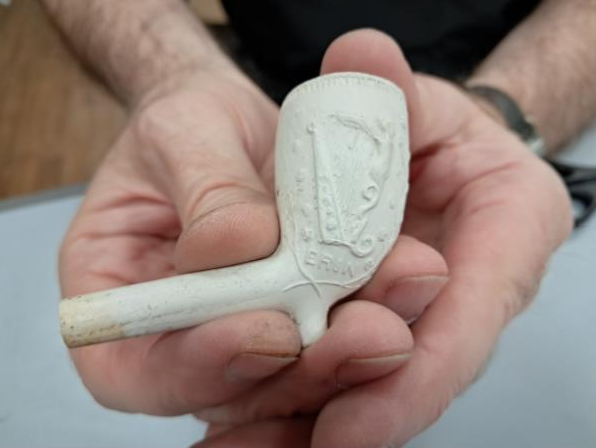Discovery Centre Finds - Clay Pipes
CR1852 From Store to Store
Archive Blog post no. 4
Clay tobacco pipes from Berkeley Street, Gloucester
The use of clay pipes for smoking tobacco was popular in England from the late Tudor period until the late 19th century. Some of the pipes used in the 19th century take unusual ‘novelty’ forms or feature moulded designs expressing national identities, military service or political ideals.
The first pipe shown bears the crest of the Royal Inniskilling Fusiliers, an Irish infantry regiment. The crest shows an image of Enniskillen Castle surmounted by a crown, a sphinx below and the mottoes ‘Inniskilling’ and ‘Egypt’. The latter commemorates the involvement of the 27th Regiment of Foot (Inniskilling), in the battle of Alexandria in 1801. The Royal Inniskilling Fusiliers were formed in formed in 1881 from the 27th and the 108th infantry regiments in 1881.
The second pipe has a design showing on one side a winged ‘Maid of Erin’ harp with ‘ERIN’ below and on the other a spray of three shamrocks. Both were nationalist symbols widely popular in the second half of the 19th century. Immigration from Ireland was common in the 19th century, in particular following the Great Famine (1845–1852) and towns including Gloucester and Cheltenham are known to have had significant Irish populations. Pipes such as this were intended to show the owner’s identity and patriotism.



